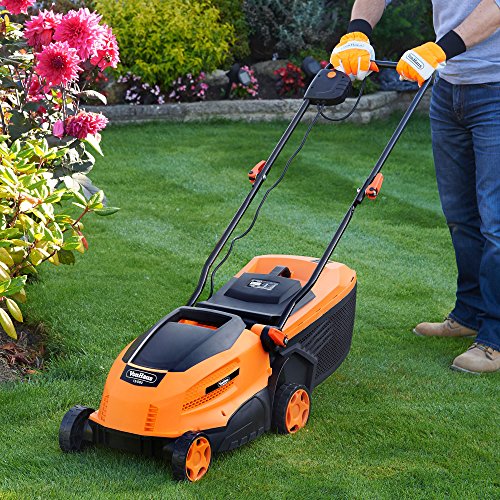
Prepare Your Garden for Winter
It’s approaching that time of year again, where the colour in your garden is fading and many of your vegetable crops have already peaked (of course some vegetables do very well over Winter). Rather than being a time to slow down through Autumn, this can actually be an incredibly busy time as you prepare your garden for Winter.
Forget Spring Cleaning, How About Autumn Cleaning?
First up, is clearing away all the old vegetation that’s built up from Summer. Clearing away all the clutter, such as fallen leaves, can be a good idea, especially if there’s been a few dry days and the leaves are crisp and easy to sweep, rather than a soggy mess.
If you have a greenhouse, its also worth clearing leaves and moss from glass and guttering. This will also help keep rainwater escape properly through a wet and windy Autumn and Winter. At the same time, it’s worth giving any greenhouse glass a clean up, as it’ll help let as much sunlight as possible work it’s magic over the shorter Winter days.
Since we’re on a cleaning frenzy, it can be worth taking this time to properly clean any seeding trays and empty plant pots, as they’ll then be nice and ready to use when Spring comes around.
Out With The Old, In With The New
Autumn is a good time to re-position plants and restructure your garden design and layout. It’s worth cutting faded perennials back to around 5cm above ground level. Don’t be too ruthless, as these plants will also provide shelter for overwintering insects. Once your borders and planting is all clean and tidy, it’s worth spreading a thick layer of compost, bark chips or well rotted manure.
If you have annual plants, now is the time to dig them up and throw them on the compost heap. While on the subject of compost, Autumn is a perfect time to clear out last year’s compost and use it around the garden to make room in compost bins for this season’s waste. Of course, if your compost isn’t quite ready to use, you can take this time to turn it, which should help improve decomposition. You can also just create a new compost heap, the more the better.
Cover Up Those Ponds
Decomposing leaves can block filters on pumps, and make pond water foul. Rather than having a big cleaning task to look forward too, it’s a better idea to catch leaves before they fall into your pond in the first place. Simply spread a fine meshed net across the pond and pin it down with stones. The leaves this mesh collects an be added straight to the compost heap or collected up later to make leaf mould.
Take Care of Your Lawn
If your lawn is looking a little ragged, this is a great time to give it some t.l.c. Remove any old grass clippings and moss using a rake, and as with your old annula plants, add these to the compost heap. If you have a lot of moss then it can be beneficial to use a moss killer first. If there are areas that receive a lot of wear such as paths, the soil can become very compact, so to help improve drainage in these areas, as well as aeration of the soil, make some holes with the prongs of a garden fork approximately every 10cm across this area. Make sure the holes are fairly deep.
Next, you may want to add an application of autumn lawn feed, which should help prepare your lawn for the coming Winter months.
Autumn is also a very good time to lay down some new turf, as this will give it plenty of time to become established before next Summer.
Put Some Evergreens in Your Garden
Evergreens can form an essential part of any garden, providing structure and all year round interest. Winter is the time when you will really appreciate your evergreens. Since the soil is still warm, Autumn is the perfect time to fill those gaps in your borders.
For a formal look, you may want to consider adding some box or yew topiary. Lonicera nitida, Bay and Holly can be trimmed into formal shapes and make very good evergreen hedges.
Lift Plants That Are Threatened By Frost
Another thing to consider as you prepare your garden for Winter, is making sure that you lift any species such as Cannas, Begonias and Dahlias before the frosts arrive. Cut back stems and carefully lift the tubers from the ground.
Clean the soil from these and store them in trays of dry compost or sand, with just the top of crown visible. The trays should be stored in a cool but frost free place over the Winter, until they can be re-planted next Spring.
In very mild areas it may also be possible to keep some of these species safe without actually lifting them. Just cover the crowns with a thick blanket of mulch.
Don’t Forget Your Garden Tools
Sharpen any tools that need it, and remove rust where possible. You may want to consider having your lawn mower serviced before you store it for the Winter, that way it’ll be ready to go straight away when it’s needed again.
Spades, forks and other garden tools will benefit from having a good wash, but make sure you dry them thoroughly and oil the metal parts to prevent rust appearing. Wooden handles can also be thoroughly cleaned and protected with linseed oil.
Summary
We hope these tips have given you some ideas to help you prepare your garden for Winter. If you need a few new garden tools to get the job done, why not take a look at our superb range of garden tools and lawn mowers.


